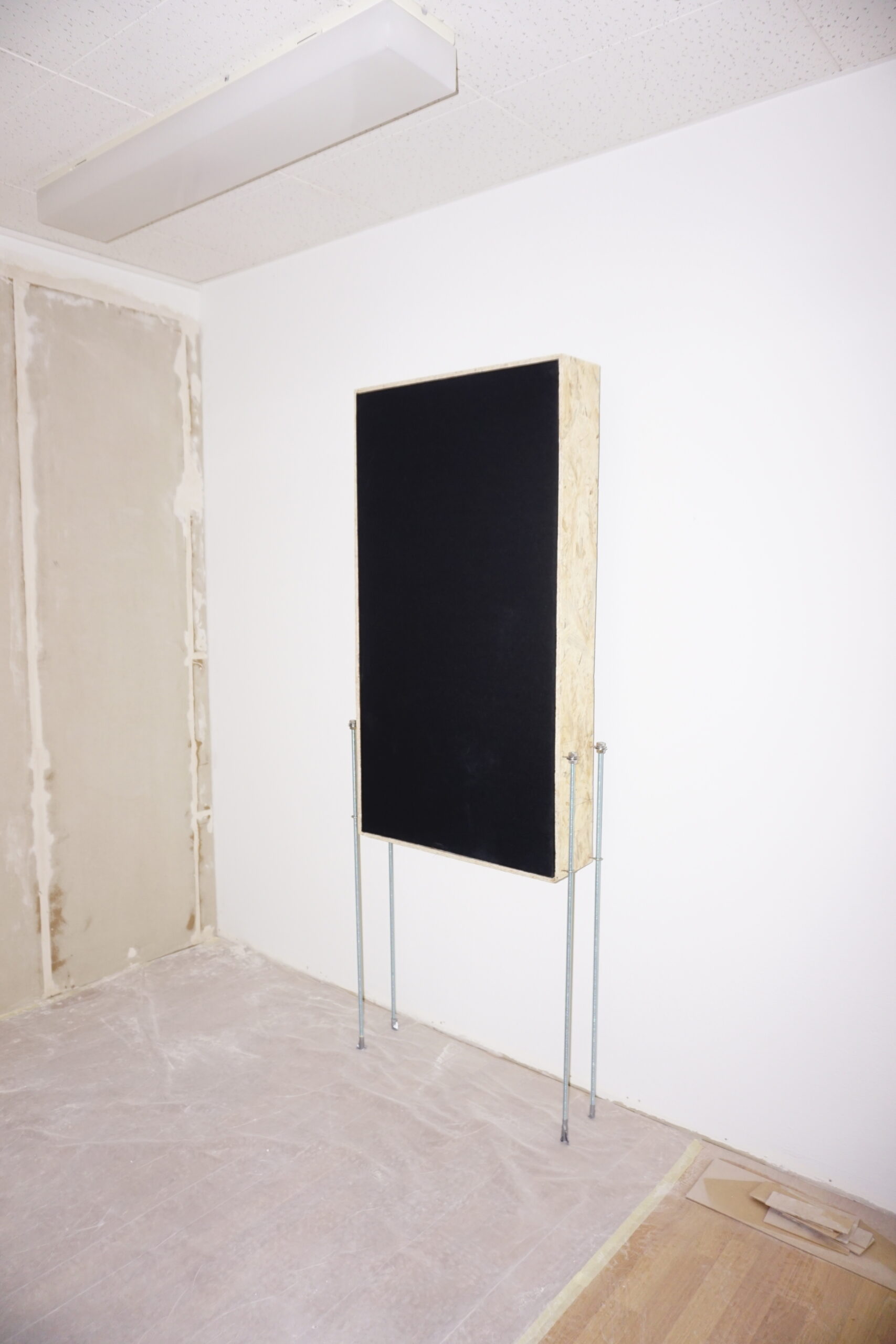Assignment 01
Exploring Sound Qualities in Architectural Design
A – Studios in ONA
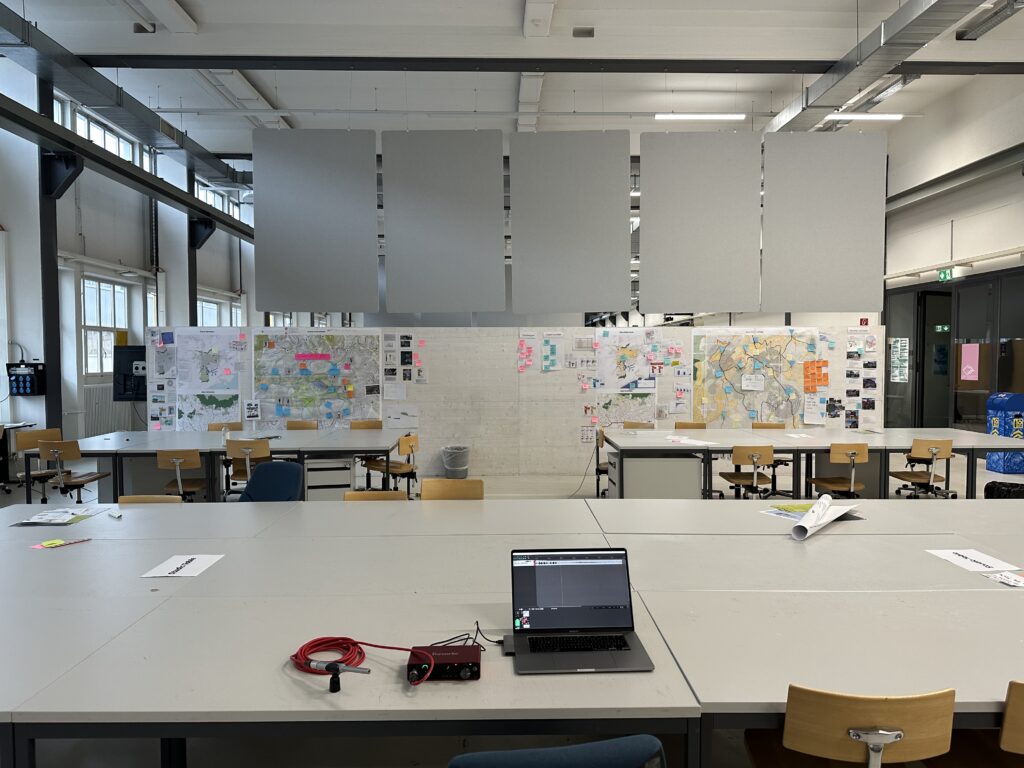
This inside space is located in ONA and is quite big. The main purpose of this hall are studio spaces of different architectural design chairs. The sound can be described as a bit reflective, but due to absorber panels noise from neighbors are absorbed. A lot of side noises are in the space.
B – Outside Space ONA
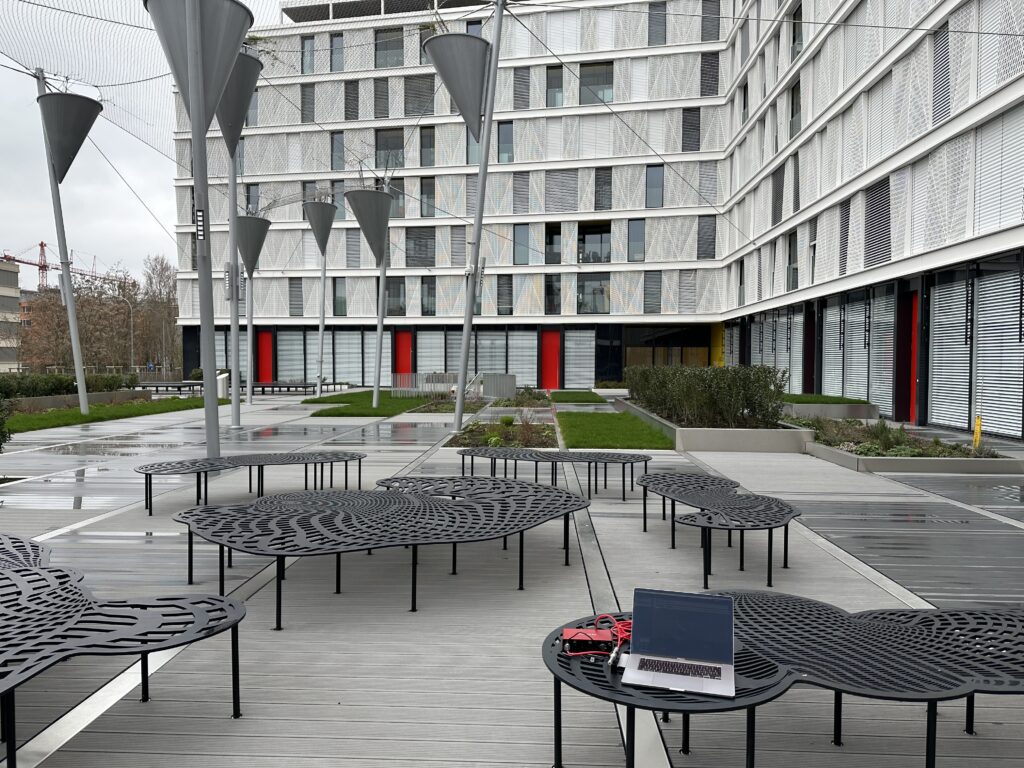
This outside space is also located in ONA. It’s a place shared by students and people living in the apartments seen in the back. Next to these buildings is a medium busy street. The sound is pretty direct but empty. A lot of side noises are in this space.
Assignment 02
Empirical and numerical estimation of room acoustic properties
C – Living room in my apartment
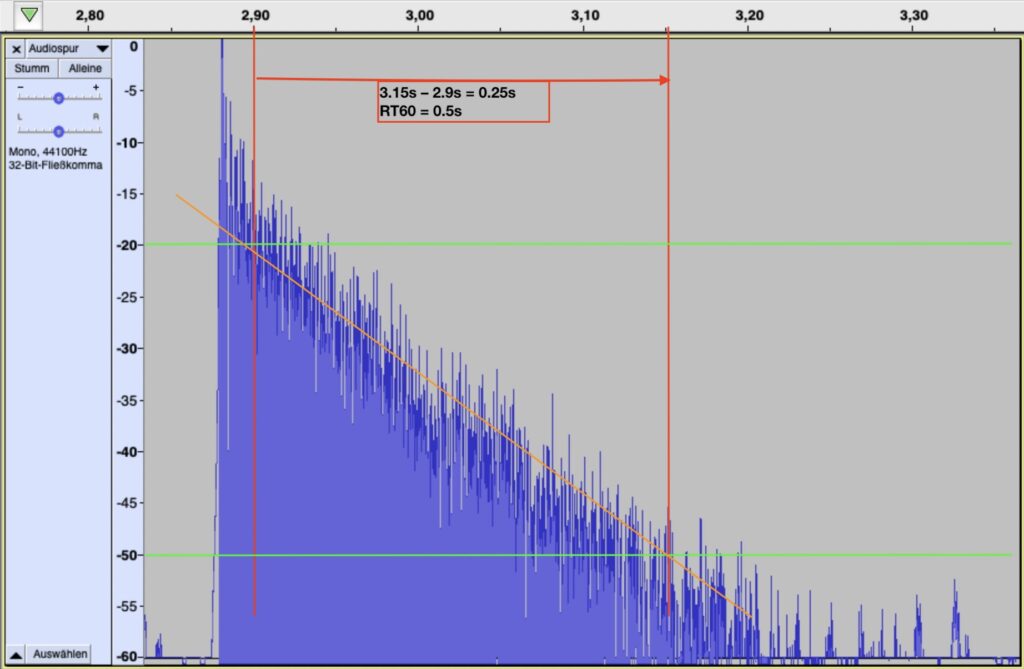
30 dB drop: 3.15s – 2.9s = 0.25s
x2 for 60 dB
RT60 = 0.5s
Assignment 05
Characterization of room acoustic treatments
A – Studios in ONA
The effective elements are absorber panels and they are located between the studios. But due to big gaps inbetween, they are probably not that effective. What also has a big influence are partition walls between the studios. On one side they separate the noises from the other side but on the other side bring big reflection to the own studio. And a last element are partition walls between the tables (not seen in the picture above, but thin 3cm thick wooden panels). They have the same effect in a smaller scale.
B – Outside Space ONA
As most outside spaces, there are not many relevant elements. Temperature, Relative humidity and static air pressure pay have the biggest influence in outside spaces in general.
C – Living room in my apartment
In my apartment are many surfaces that absorb sound; a bed 140×200 a carpet 140x 200 right next to the bed. One part of the shelve always contains clothes, which also absorb. And the ceiling is out of a styrofoam with a thin plaster, I guess.
Final Assignment
Recording Studio, Lucerne, Dattenmatt
Introduction
In january, my friends and me built a recording studio located in my hometown Lucerne. The parts we built were asorber panels and one big additional wall as a second absorbing layer in the back of the room. For this project I want to further analyse the space and improve it.
For a person sitting at the table, the reverberation time in a music studio should be 0.2 – 0.3 seconds.
The absoprtion surface for this room is therefore approx. 42 m2
T = 0.163 x (V / A)
0.3 = 0.163 x (76.15 / A)
A = 42.39 m2
V = 244 x 385.3 x 810
= 76’150’692 cm3
= 76.15 m3

2.1 Absorber Panels
The absorber panels should be cheap and easy to built.
The main material for absorption is Rockwool, 3 layers of 50mm = 150mm / panel
All together, we built 8 of them.
We decided to make them moveable out of 2 reasons:
- As you can see in the previous drawing, we have 2/4 walls only with windows, so we cannot attach them.
- To isolate seperate instruments, if f.e. a guitarist is coming or to built a small booth for a singer.
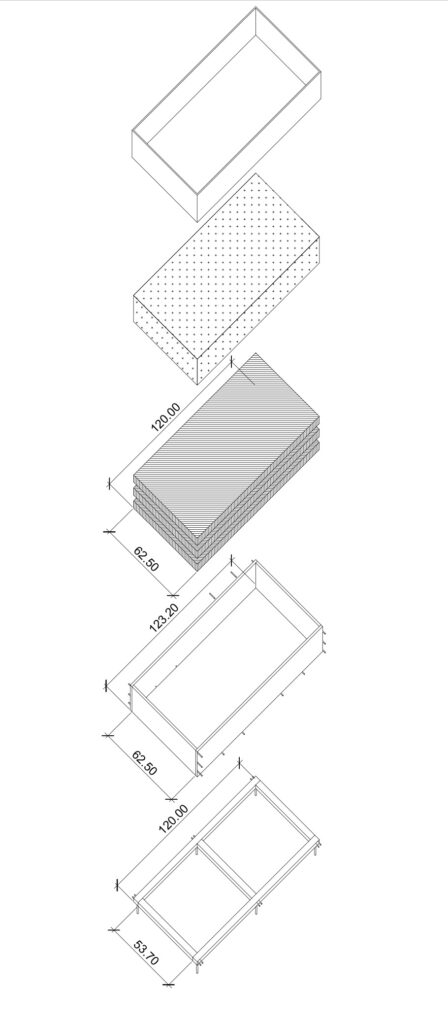
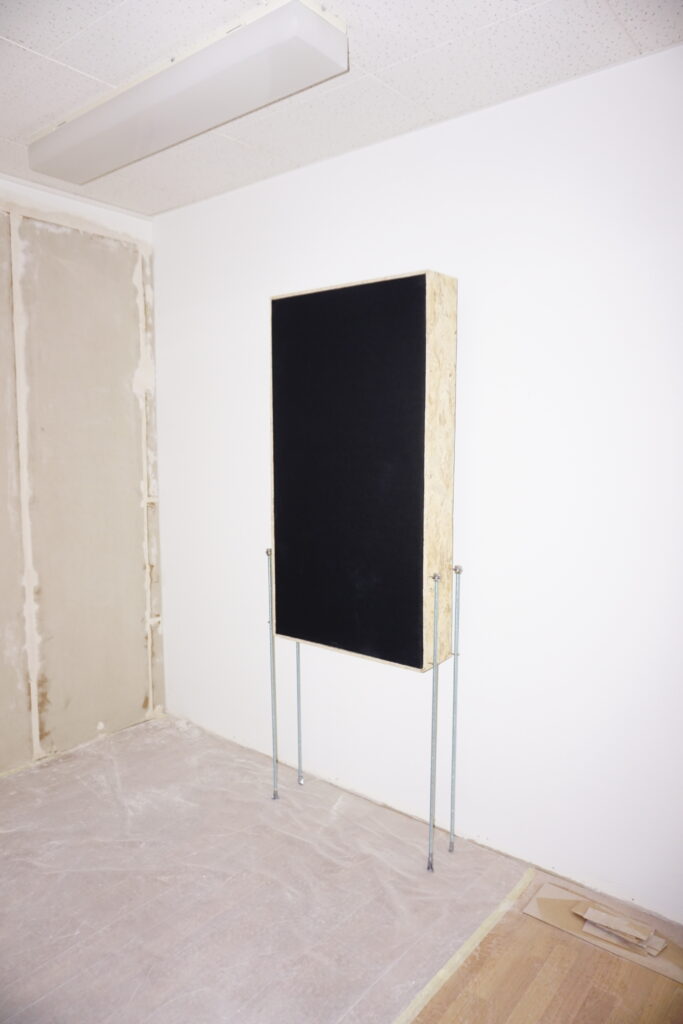
2.2 The Wall
In the back of the room, we reinforced the absorbtion and acoustical insulation of the wall out of 2 reasons:
- Since the room was very long, the reflection at the end is unwanted. >>> Absorption (Shoe box?)
- It’s the only wall facing another party. >>> Insulation


(2)
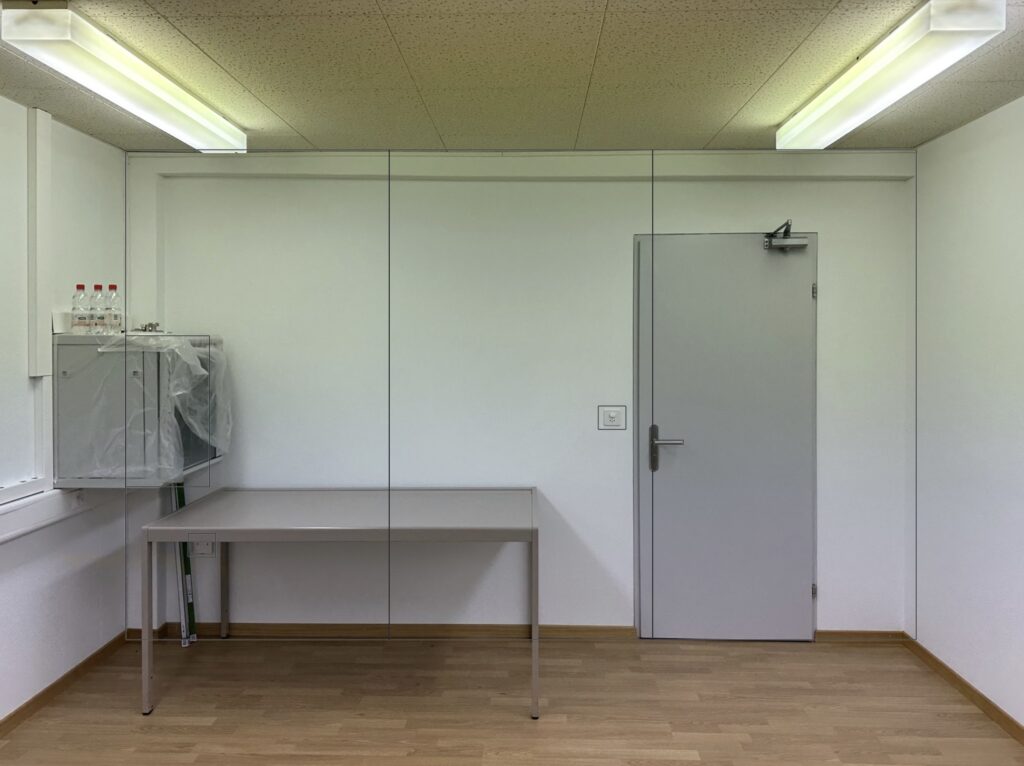
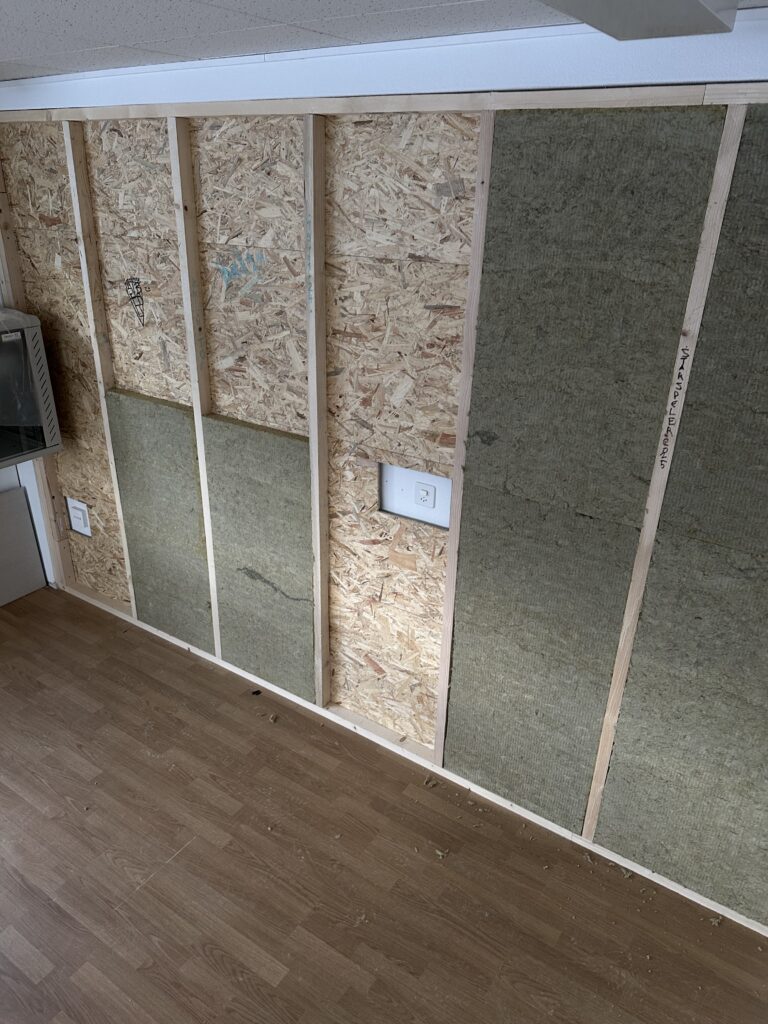

Poorly we realised, the refelction rised again strongly after the last layer of gypsum… Obviously… For that i prepared this alternative (below) but it was never built. (not yet hehe)
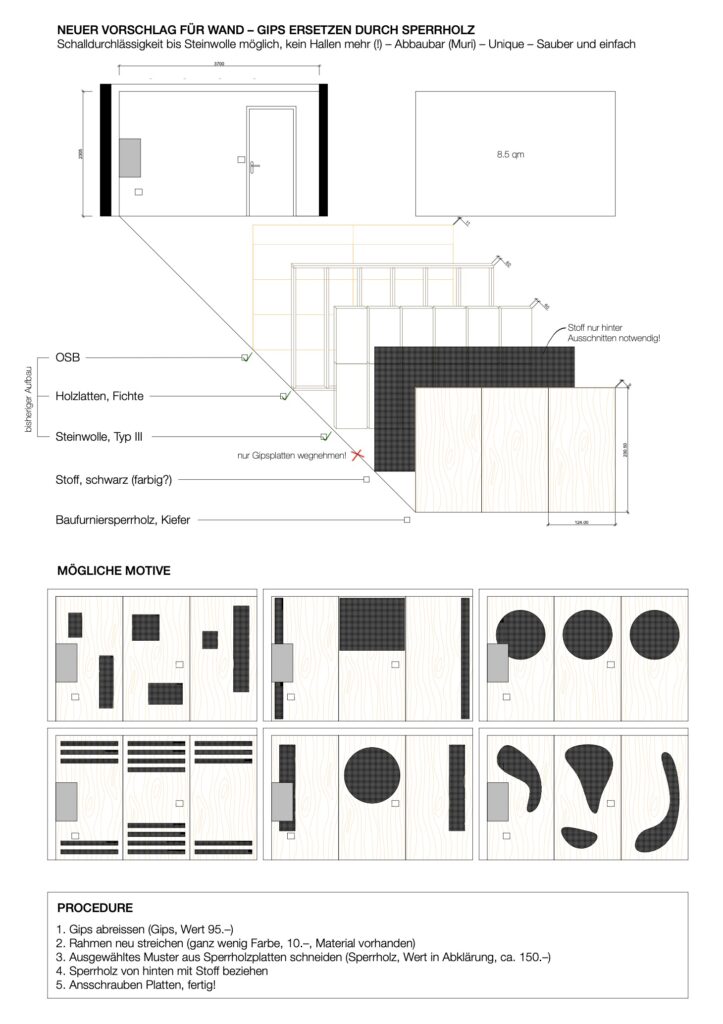
3. Disposition
Normally angle of incidence = angle of reflection
But what if we place the panels randomly as you can see on the picture below?

(3)
4. Simulation and Analysis
First i modeled it too precise for the Rhino Plugin Pachyderm.
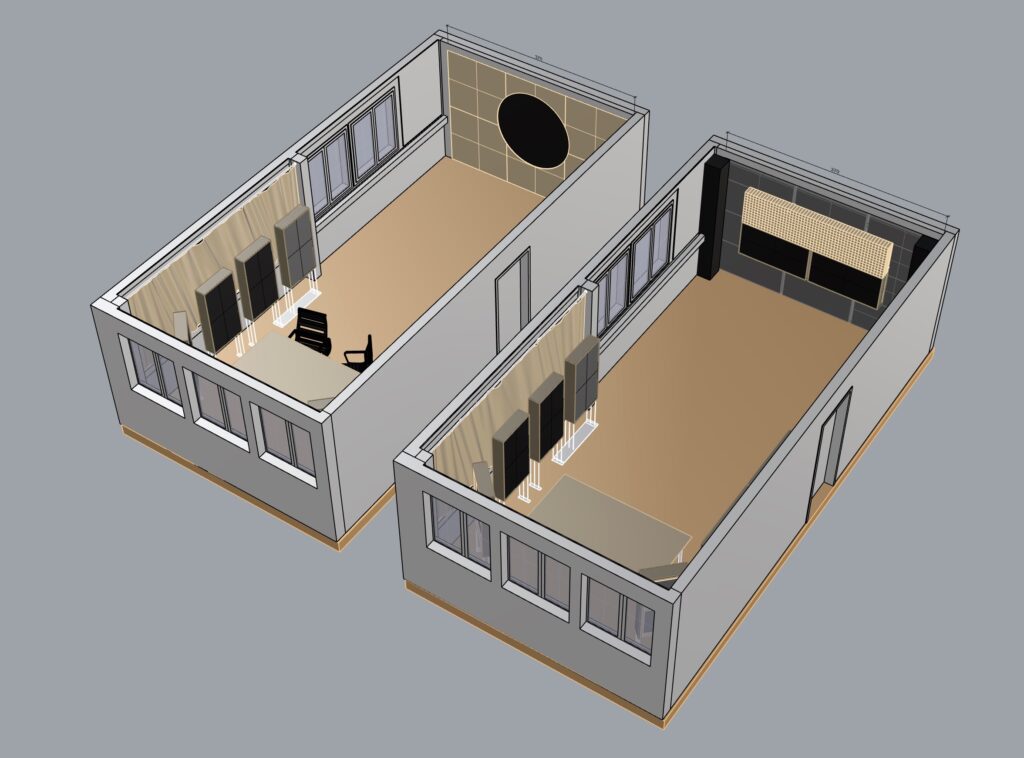
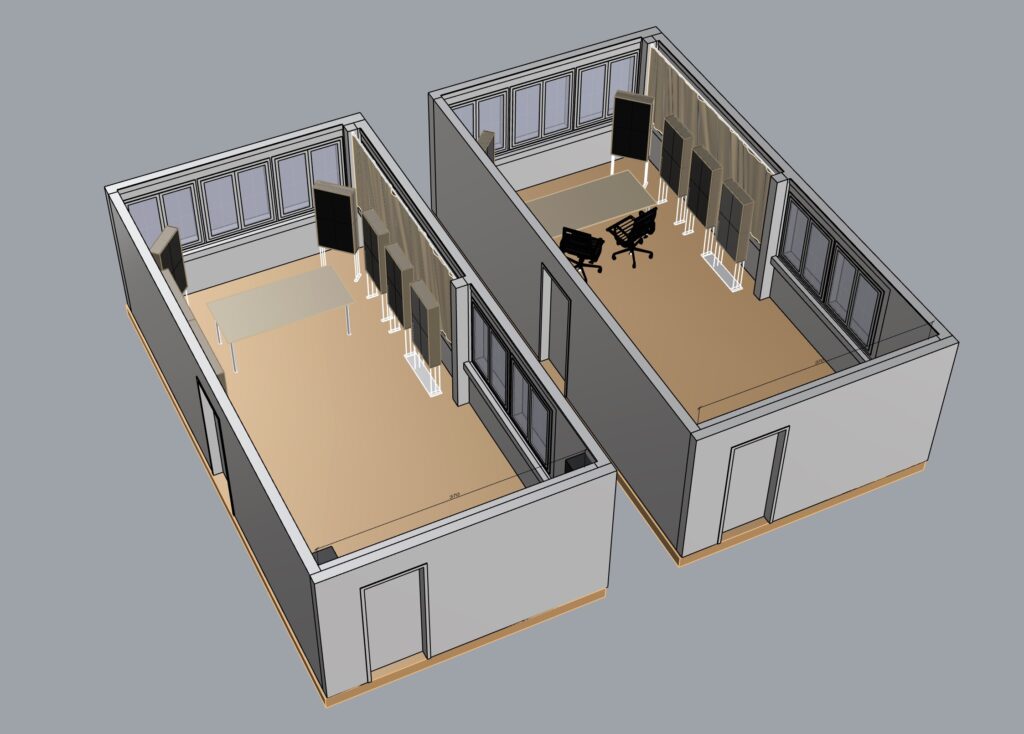
Then easier.

A – SPACE
First let’s only analyse the space with 2 loudspeakers and 1 listener (Producer) sitting at the table. (60 degrees triangle)
Parameters:
Walls: Plaster on solid wall
0,04 0,05 0,06 0,08 0,04 0,06
Windows: Double glazing, 2-3mm glass, 10mm air gap
0,15 0,05 0,03 0,03 0,02 0,02
Floor: Linoleum or vinyl stuck to concrete
0,02 0,02 0,03 0,04 0,04 0,05
Ceiling: Gypsum plaster tiles, 17% perforated, 22mm
0,45 0,70 0,80 0,80 0,65 0,45
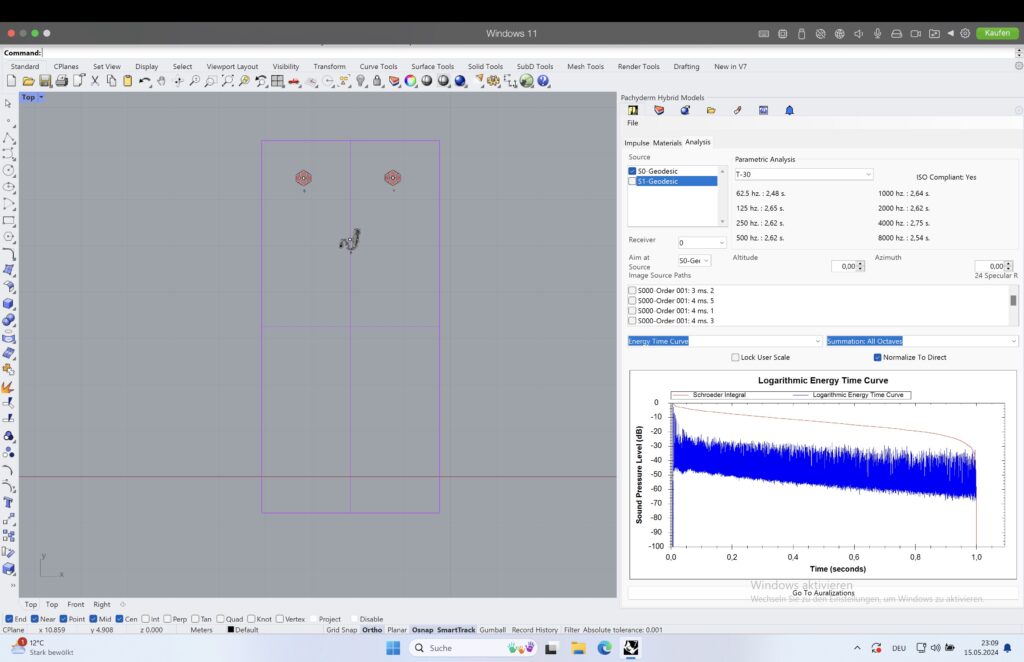
Ref. Time = 2.6s
B – INSTALLATIONS
B1
Let’s first see what happens if we only add the panels, but in a weird layout like in the picture above (3).
add. Parameters:
Panels: Rock wool, (150mm) 100mm, 33 kg/m3 direct to masonry
0,35 0,95 0,98 0,92 0,90 0,85
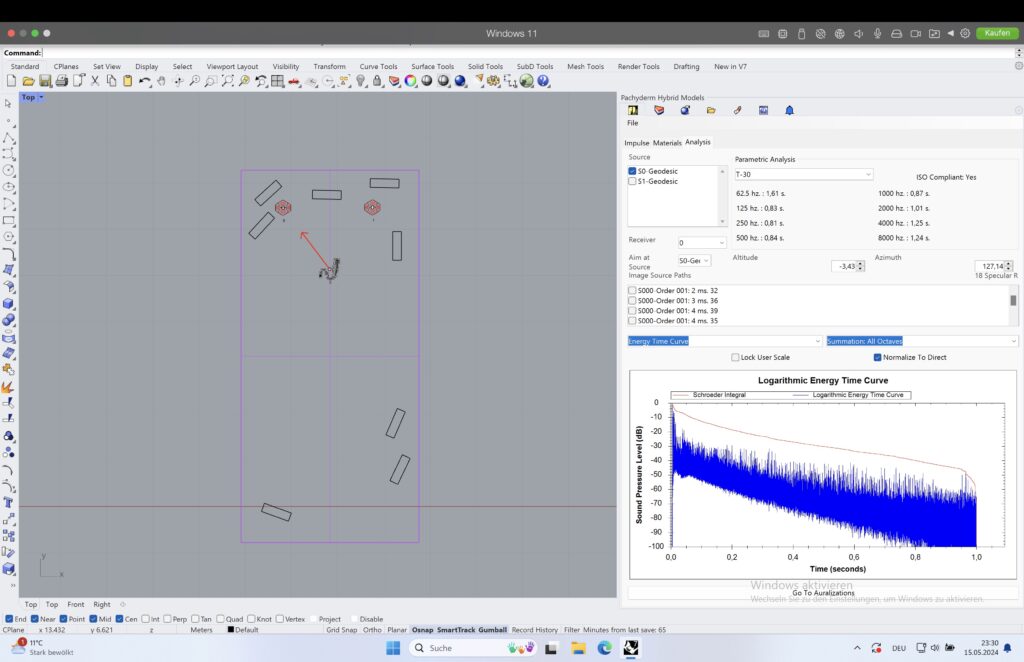
Ref. Time = 0.8s
B2
Now, let’s compare it to a layout that could make sense.
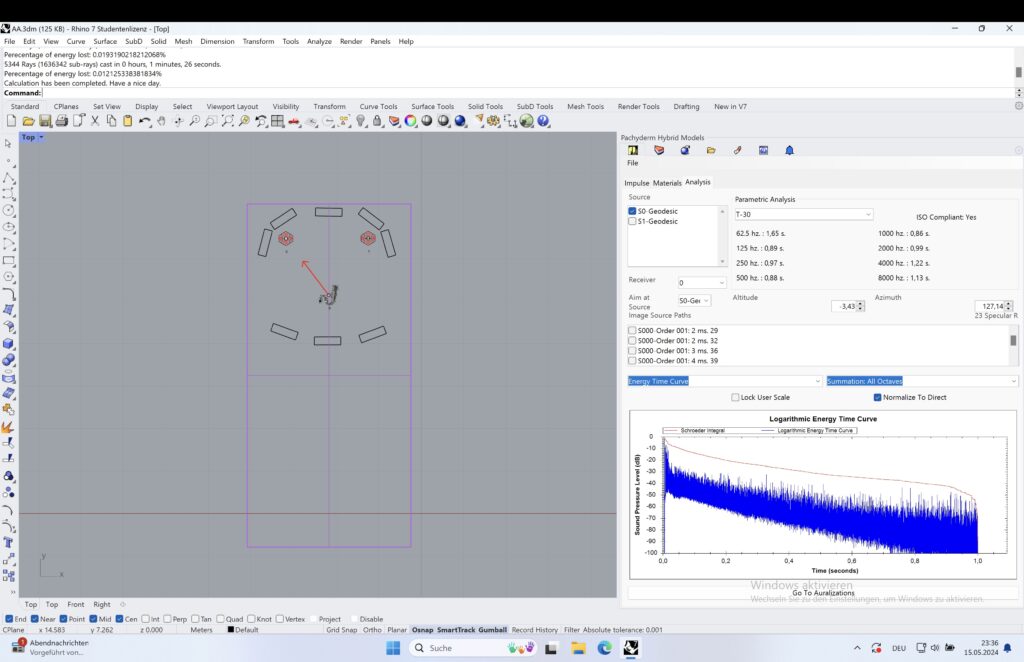
Ref. Time = 0.8s (but higher than in a weird layout) (?)
B3
Now let’s check the reverberation time with the built wall, but without the Panels.
Parameters:
Built Wall (only first layer): (Gypsum) Plasterboard on frame 100mm cavity 13mm
0,08 0,11 0,05 0,03 0,02 0,03
Ref. Time = approx. 2.3s
(It will be the same, since: Walls: Plaster on solid wall
0,04 0,05 0,06 0,08 0,04 0,06)
B4
Built wall and panels.
Ref. Time = approx. 2.3s
(It will be the same)
B5
Now let’s analyse my second proposal for the wall in the back (without panels)
1/3: Rock wool 50mm, 33 kg/m3 direct to masonry 17
0,15 0,60 0,90 0,90 0,90 0,85
2/3: 12mm plywood in framework with 30mm airspace
containing glass wool 12mm
0,40 0,20 0,15 0,10 0,10 0,05

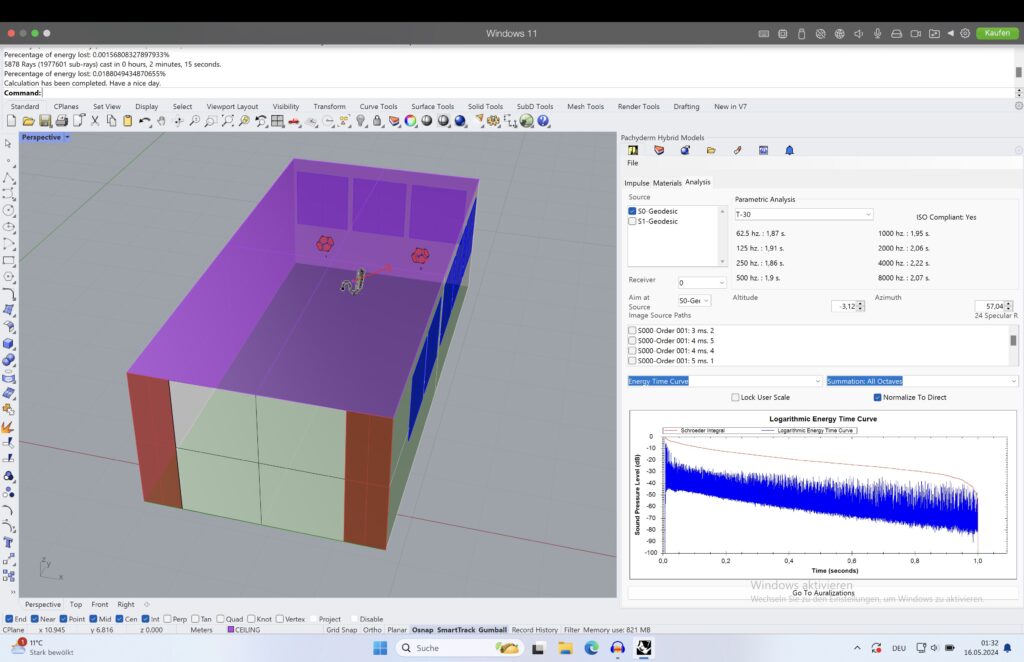
Ref. Time = 1.9s
B6
Now let’s analyse my second proposal for the wall in the back (with a proper layout for the panels)

Ref. Time = 0.75s
B7
Adding Curtain + Carpet
Parameter:
Cotton Curtains (0.5kg/m2),draped to 75% area
approx. 130mm from wall
0,30 0,45 0,65 0,56 0,59 0,71
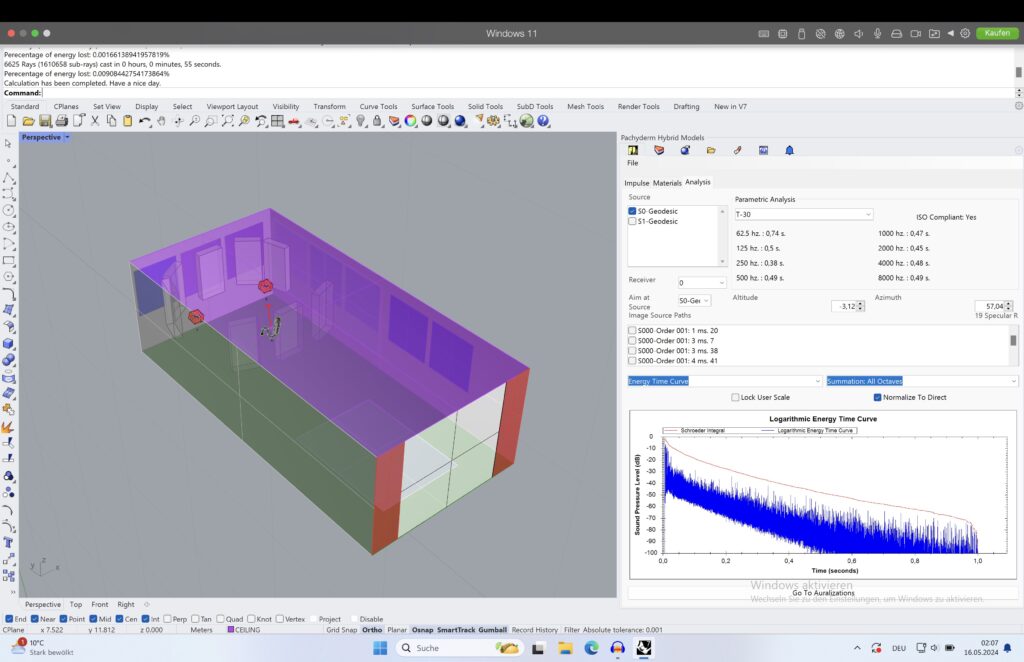
Ref. Time = 0.45
B8
Adding couch

Ref. Time = 0.23
5. Conclusion
Now it works 🙂 But i need to messure it to approve the results in a next step.
6. Further questions
What can an additional diffusor at the end of the room add?
Have these 2 openings/ wholes a relevant influence on the insulation to the outside corridor? (Insulation)

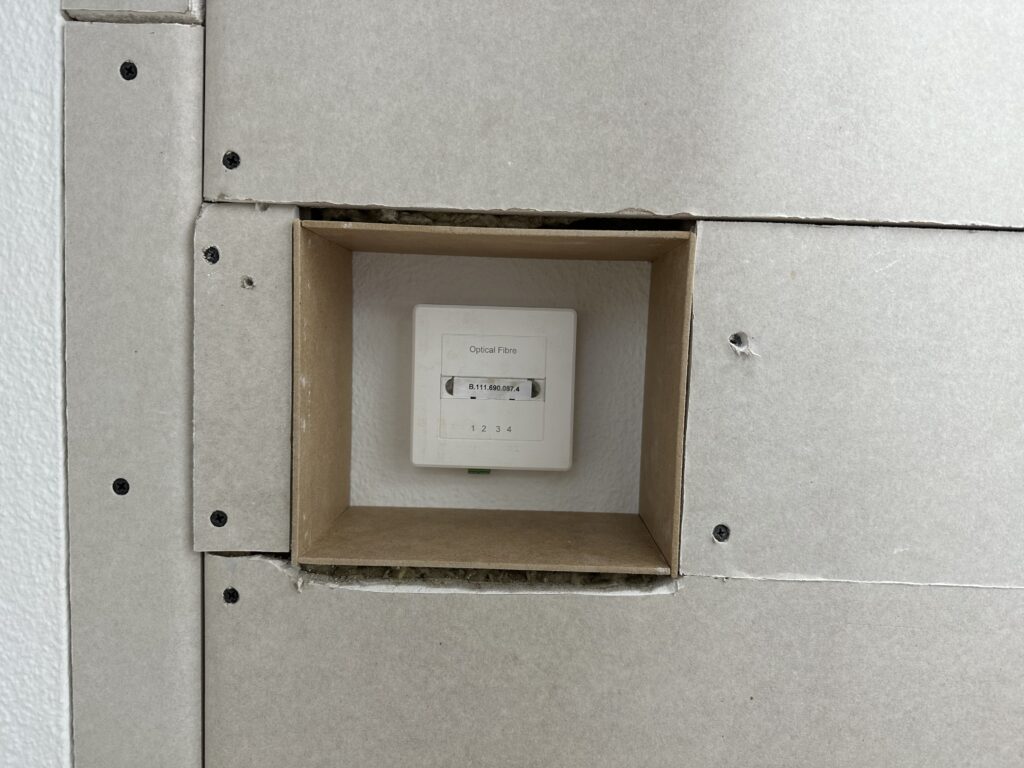

Built wall; Layers of materials. Porosity?
Sources
(1) https://www.acoustic.ua/st/web_absorption_data_eng.pdf

